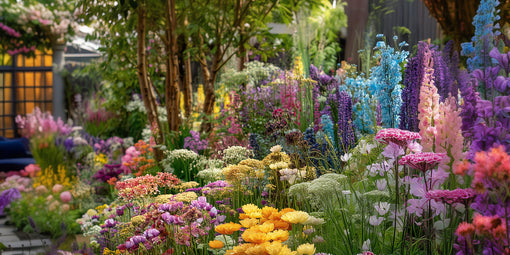
- Article published at:
Drawer menu
You know what they say, "it's all in the presentation"! And when it comes to flowers, presentation is key. A flower vase is like the ultimate accessory to any bouquet. It can take those flowers from "oh, they're nice" to "WOW, those flowers are stunning!".
Think about it, have you ever seen a bouquet of wildflowers in a fancy crystal vase? Or a single rose in a mason jar? It completely changes the vibe. A vase has the power to elevate the beauty of your flowers and make them stand out. And let's be real, who doesn't love a little extra oomph in their decor? So, let's ditch the boring vases and find the perfect one that will make your flowers shine.

Okay, so you're ready to choose the perfect flower vase, but where do you even begin? Don't stress, we've got you covered. When it comes to choosing a vase, there are a few key factors to consider.
First up, size and shape. This is a big one, you don't want a vase that's too big or too small for your flowers. Proportion is key, you want the vase to complement the flowers, not overpower them.
Next, let's talk material. Glass, ceramic, metal, wood, the options are endless. Each material has its own unique look and feel, so think about what will work best with your flowers and your home decor. And last but not least, color and design.

This is where you can have some fun, play around with matching or contrasting colors and designs. The key is to find something that makes your flowers pop. So, take your time, consider all the options and pick the vase that will make your flowers shine!
Alright, you've picked out the perfect vase, now it's time to get those flowers arranged. This is where the real fun begins! First things first, you'll want to make sure you have the right tools, a sharp pair of scissors and flower food are a must. Now, let's talk technique.
There are a few different ways you can arrange your flowers, the triangle method, the spiral method, and the asymmetrical method. Each one has its own unique look and feel, so experiment and see which one you like best. For a more detailed explanation on how to arrange your flowers follow this easy step-by-step flower arranging guide.

Once you've got your flowers arranged, you'll want to make sure they stay fresh as long as possible. Make sure to trim the stems and change the water regularly. And if you want to go the extra mile, keep your vase in a cool place.
But remember, don't get too caught up in perfection, sometimes the best arrangements are the ones that look a little wild and organic. Have fun, get creative and don't be afraid to make mistakes.
After all, it's all about the journey, not the destination. Need a more detailed guide on how to arrange your flowers, read more here!

Choosing the perfect flower vase and arranging flowers can seem like a daunting task, but with the right knowledge and understanding, it can be a fun and easy process.
We've covered the key factors to consider when choosing a vase such as size, shape, material, and design. And we've also provided tips and techniques on how to arrange flowers in a vase, from the classic triangle method to the modern asymmetrical method.
Remember, don't be afraid to experiment and try new things, the beauty of flower arranging is that there is no right or wrong way to do it. So, grab your vase, your flowers and have fun creating beautiful and unique arrangements that will enhance any room in your home.
And don't forget to share your creations with us by tagging @realflowerlov on your instagram posts and stories, we can't wait to see the stunning arrangements you come up with!